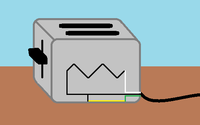By Chuck Martin
 The smart home is poised to explode in smartness.
The smart home is poised to explode in smartness.
While not so smart at the moment, with fewer than a million ‘white-goods’ smart devices shipped last year, the home connected appliance situation is going to dramatically increase, based on a new global study.
More importantly, when connected devices outside of major appliance are included, the overall platform size of the connected home is huge, according to the latest data from the IHS Home Appliance Intelligence Service.
The size of the connected white-goods market is projected to grow from fewer than one million units shipped last year to 223 million units within five years. Those appliances include washing machines, clothes dryers, dishwashers, refrigerators, room air conditioners and large cooking appliances.
However, there are other types of connected devices coming. These include things like electric toothbrushes, air purifiers, microwaves, robot vacuums, rice cookers and coffee machines.
With those included, the addressable smart connected home-appliance market is forecast to hit 700 million units within five years.
The key word here is addressable.
It is this addressability that will allow messaging to ride inside the connections.
The major manufacturers around the Internet of Things are starting to coalesce around standards for all of these things to be able to effectively communicate with each other. And then others can theoretically connect through them.
Within the next two to three years, there will be only a couple of connectivity platforms, operating systems and a small number of technology-oriented appliance companies dominating the market, according to the IHS forecast.
The research identifies three critical factors that will impact smart appliance adoption. They are:
- Energy management initiatives – Include dynamic pricing, government initiatives and structure of utilities
- Standards for interoperability – Standards for connecting devices are gradually emerging
- Other marketplace dynamics – Include product pricing, retail environment, competitive landscape, approaches adopted by suppliers and overall interest in smart home technology
As more smart devices get connected to each other in the home, the following, and perhaps simultaneous, innovation will be in the messaging.










